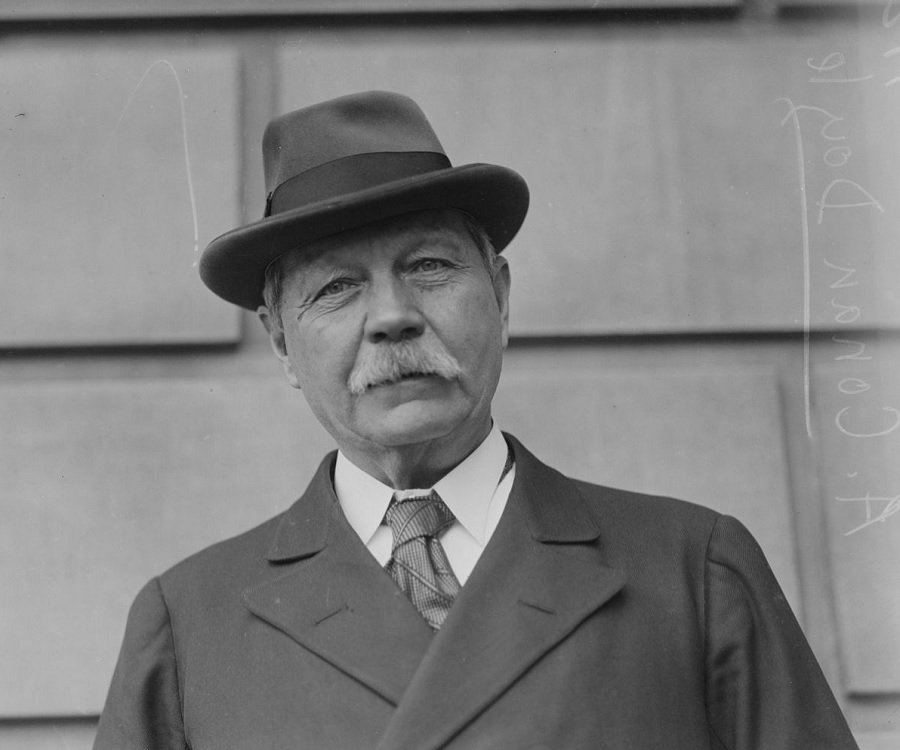
Arthur Conan Doyle
Biography
On May 22, 1859, Arthur Conan Doyle was born in Edinburgh, Scotland. In 1890 his novel, A Study in Scarlet, introduced the character of Detective Sherlock Holmes. Doyle would go on to write 60 stories about Sherlock Holmes. He also strove to spread his Spiritualism faith through a series of books that were written from 1918 to 1926. Doyle died of a heart attack in Crowborough, England on July 7, 1930.
Early Life
On May 22, 1859, Arthur Conan Doyle was born to an affluent, strict Irish-Catholic family in Edinburgh, Scotland. Although Doyle's family was well-respected in the art world, his father, Charles, who was a life-long alcoholic, had few accomplishments to speak of. Doyle's mother, Mary, was a lively and well-educated woman who loved to read. She particularly delighted in telling her young son outlandish stories. Her great enthusiasm and animation while spinning wild tales sparked the child's imagination. As Doyle would later recall in his biography, "In my early childhood, as far as I can remember anything at all, the vivid stories she would tell me stand out so clearly that they obscure the real facts of my life."
At the age of 9, Doyle bid a tearful goodbye to his parents and was shipped off to England, where he would attend Hodder Place, Stonyhurst—a Jesuit preparatory school—from 1868 to 1870. Doyle then went on to study at Stonyhurst College for the next five years. For Doyle, the boarding-school experience was brutal: many of his classmates bullied him, and the school practiced ruthless corporal punishment against its students. Over time, Doyle found solace in his flair for storytelling, and developed an eager audience of younger students.
Education and Career
When Doyle graduated from Stonyhurst College in 1876, his parents expected that he would follow in his family's footsteps and study art, so they were surprised when he decided to pursue a medical degree at the University of Edinburgh instead. At med school, Doyle met his mentor, Professor Dr. Joseph Bell, whose keen powers of observation would later inspire Doyle to create his famed fictional detective character, Sherlock Holmes. At the University of Edinburgh, Doyle also had the good fortune to meet classmates and future fellow authors James Barrie and Robert Louis Stevenson. While a medical student, Doyle took his own first stab at writing, with a short story called The Mystery of Sasassa Valley. That was followed by a second story, The American Tale, which was published in London Society.
Personal Life
In 1885, while still struggling to make it as a writer, Doyle met and married his first wife, Louisa Hawkins. The couple moved to Upper Wimpole Street and had two children, a daughter and a son. In 1893, Louisa was diagnosed with tuberculosis. While Louisa was ailing, Doyle developed an affection for a young woman named Jean Leckie. Louisa ultimately died of tuberculosis in Doyle's arms, in 1906. The following year, Doyle would remarry to Jean Leckie, with whom he would have two sons and a daughter.
Writing Career
Doyle continued to actively participate in the Spiritualist movement from 1887 to 1916, during which time he wrote three books that experts consider largely autobiographical. These include Beyond the City (1893), The Stark Munro Letters (1895) and A Duet with an Occasional Chorus (1899). Upon achieving success as a writer, Doyle decided to retire from medicine. Throughout this period, he additionally produced a handful of historical novels including one about the Napoleonic Era called The Great Shadow in 1892, and his most famous historical novel, Rodney Stone, in 1896.
The prolific author also composed four of his most popular Sherlock Holmes books during the 1890s and early 1900s: The Sign of Four (1890), The Adventures of Sherlock Holmes (1892), The Memoirs of Sherlock Holmes (1894) and The Hound of Baskervilles, published in 1901. In 1893, to Doyle's readers' disdain, he had attempted to kill off his Sherlock Holmes character in order to focus more on writing about Spiritualism. In 1901, however, Doyle reintroduced Sherlock Holmes in The Hound of Baskervilles and later brought him back to life in The Adventure of the Empty House so the lucrative character could earn Doyle the money to fund his missionary work. Doyle also strove to spread his faith through a series of written works, consisting of The New Revolution (1918), The Vital Message (1919), The Wanderings of a Spiritualist (1921) and History of Spiritualism (1926).
In 1928, Doyle's final twelve stories about Sherlock Holmes were published in a compilation entitled The Casebook of Sherlock Holmes.
